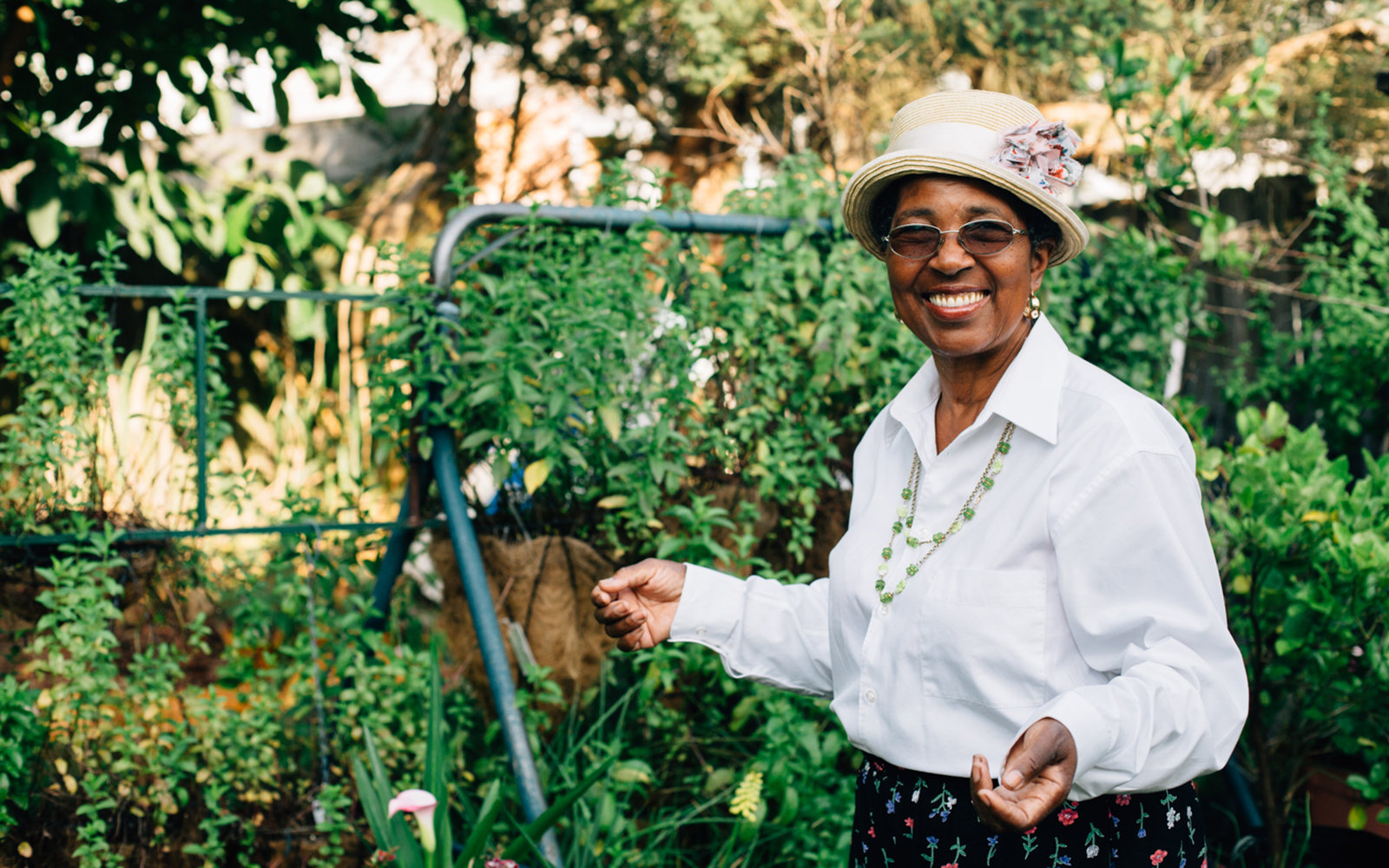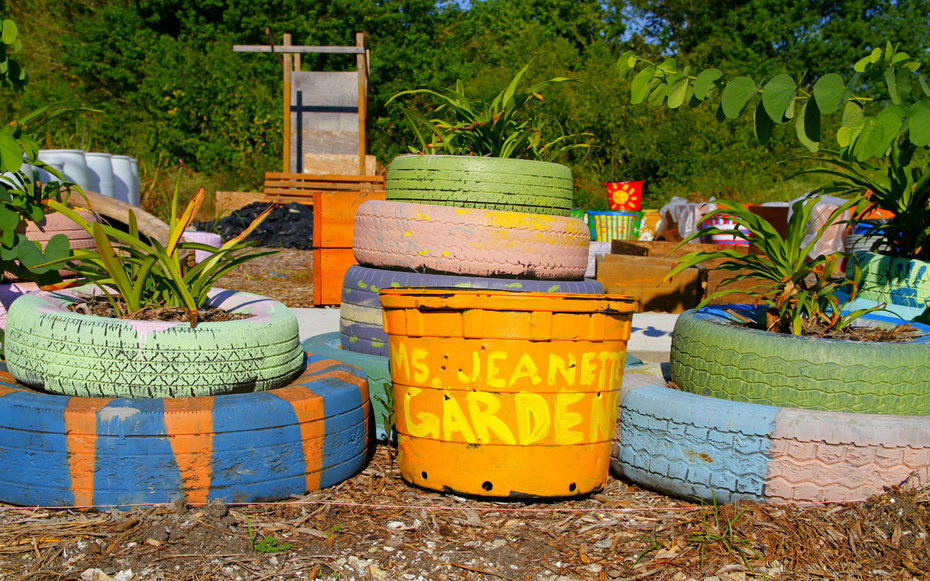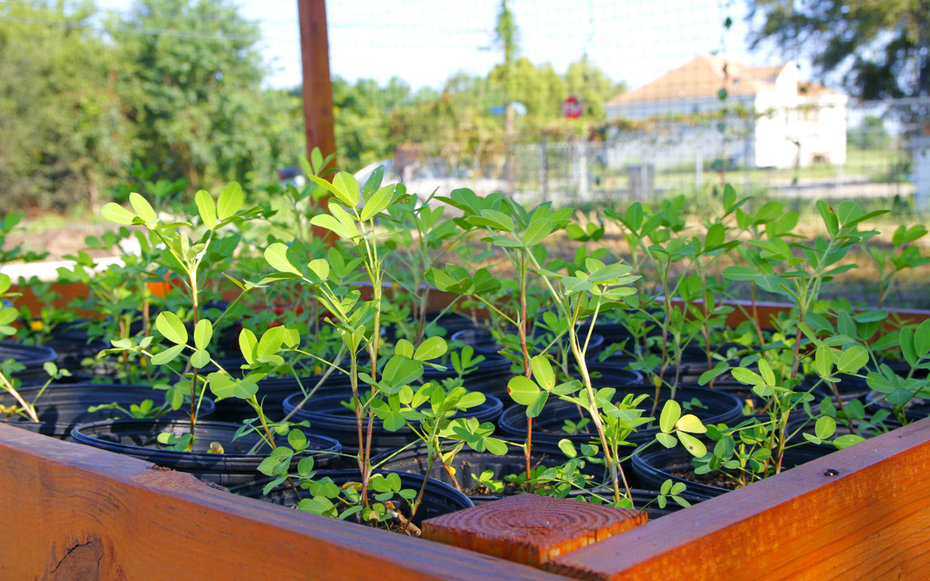
For a tourist, it could be easy—if you’re not paying attention—to visit New Orleans more than a decade after Katrina and forget there was ever a storm here. Aside from the turbulent sidewalks, so rumpled they look as though some beast once swam beneath them, and potholes the size of small ponds, much of the city (particularly in tourist-centric areas such as the French Quarter) has revived remarkably. For example, NOLA has more restaurants today than it did before Katrina.
But much of the Big Easy is still having a hard time, and to truly spread your tourism dollars around and support the whole town, you have to leave the Quarter when you come here.
A short cab or bike ride away is the Lower Ninth Ward, arguably one of the hardest hit areas during Katrina. Once thickly settled, today housing in some parts is sparse: Bare lots stretch, covered with wildflowers, punctuated by the occasional stout, bright building. Some companies even (illegally) dump their waste here, so you’ll spy a dozen tires lolling about on one patch of brand-new sidewalk, and a pile of gravel and trash freshly poured on another. The neighborhood doesn’t even have a grocery store.
One 15-year New Orleans resident is determined to make a difference in the Lower Ninth. Jeanette Bell, 71, is a gardener with a very simple goal: “To grow the economy of Louisiana.”
Miss Jeanette, as she’s known, has been selling her flowers and vegetables for 35 years, from Detroit to New Orleans. Now she’s building gardens in vacant lots in the Lower Ninth for an organization called Garden of Mars, encouraging local residents to learn how to grow their own food. In an economically challenged neighborhood, how can free urban gardening workshops help? “Reduce food cost, and [help people] grow things to sell.” It is, Bell says, a mere 10 dollars to start a small home garden box.

One of her two plots houses dozens of vegetables and herbs—burly, sturdy kale; rainbow chard glowing red, orange, and green; delicate sage. The other plot contains the flower garden, teeming with snapdragons and freesia, lilies and daffodils. Bell refuses to spray—“I’m concerned about people’s health!”—and doesn’t use local soil for fear of post-storm metals contamination, including lead. Instead, she trucks in soil she trusts.
Bell models the behavior she hopes to encourage in locals: For many years prior to Garden on Mars opening in October 2015, she sold flowers, herbs, and vegetables to local chefs, markets, and perfumiers. (It’s easy to trust the growing chops of someone with one 9,000-square-foot garden and another 10,000-square-foot garden!) It frustrates her that neighborhood residents, who are without easy access to good fruits and vegetables, “are eating way more fast food than you want them to eat. If you don't have access to these vegetables, you’re not going to go looking for them.” And she hates relying upon non-local economies: “Every state should be growing their own economy. I was born in the poorest state in the union [Mississippi], and now I'm in the second poorest state in the union.” (For a good, long lecture, ask how she feels about the international floral industry.)
New Orleans, she points out, has weather and land in spades, especially in this part of the city. Ideally, locals are both growing food to eat and some to sell: “It’s a way to make money, a way for people here to have a little additional income.” Thanks to donations from private donors and a parent nonprofit called Hands on New Orleans, the fledgling organization—which Bell runs with program director Erin Zimmer (a friend of this writer)—intends to help locals figure out the most thrifty way to get them free pots, boxes, and all the accoutrements …and then keep their plants alive.

One staunch garden supporter is Mariza, a restaurant in the hip Bywater neighborhood run by a husband-and-wife team. Chef and co-owner Ian Schnoebelen says, “I pretty much buy anything Miss Jeanette has,” purchasing all of his herbs and many vegetables from the garden. (Although Bell is the sole gardener, proceeds go to the garden itself.) And she is no ordinary gardener, he laughs: “All her stuff is awesome; she’s very, very particular… She’ll bring in her herbs and say, ‘Sorry, that this one isn’t perfect, and that one isn’t perfect.’ I think they all look great!” He points out, too, that because Bell is particular about protecting her raised vegetable and herb beds from the local soil, all the vegetables and herbs are completely safe to eat.
Locals can buy Garden on Mars flowers and produce at the Sankofa farmers market, but visitors can buy into the project, too, by patronizing Mariza, donating directly to the garden (which “helps support the gardens and anyone who wants to garden,” says Bell), buying growing calendars, or tooling around the Ninth Ward on a bike tour. The Confederacy of Cruisers makes a point of stopping in to visit the garden on Saturday mornings, and cyclists can buy bouquets and flower crowns.
Miss Jeanette insists that the region is worthy of her attention and yours. “To think that 10 years down the road [from the storm] this looks like this,” she says, pointing to city streets that practically have tumbleweeds cruising down them. “Imagine investing every dime in this area,” she continues, shaking her head.
Her dream? “I want somebody to offer me 200 flowering trees to plant … We're gonna raise money to give everybody a citrus tree.” She envisions a Lower Ninth Ward in which neighbors trade grapefruits for lemons, oranges for kumquats.
If a 71-year-old woman can garden, she insists, others can, too. “If you can just stand back and let nature do what it does, you'll be OK. If you just recognize that in the universe no matter is created and destroyed, it just changes form.”